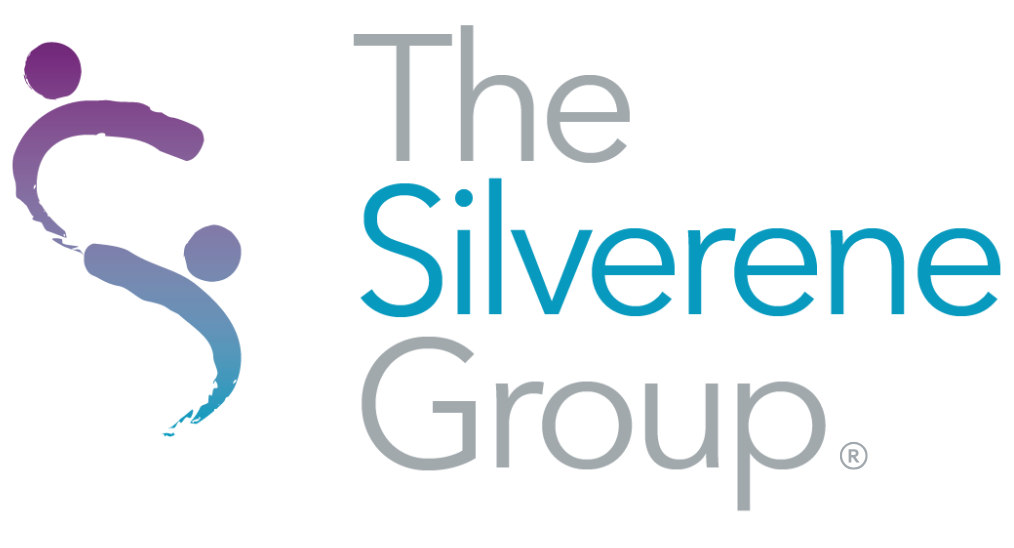
28 May What Modern Leaders Can Still Learn from George Washington
Last year, I visited the George Washington Presidential Library at Mount Vernon and got a phenomenal tour led by its former director, Patrick Spero. I expected a history lesson. I got that and a gut check.
As I moved through the library, taking in the original documents, the quiet power of the space, and the stories of Washington’s decisions, I was struck by how relevant – urgent, even – his leadership lessons still are today. And I found myself reflecting on my own journey, the hard truths I’ve faced as a leader, and the patterns I see again and again in the boardrooms, C-suites, and teams we work with at The Silverene Group.
I recently found some photos from the visit and started thinking about those leadership lessons and their even more urgent relevancy, because let’s be honest: 2025 is no joke.
We’re dealing with an economy in flux, a workforce that’s burned out and disillusioned, and leaders who are overwhelmed, out of sync, or in some cases, just going through the motions. And yet, this is the moment that demands true leadership—not performative noise, but principled action.
So, what can we learn from George Washington, a leader from a completely different era? Turns out, a lot.
1. Reluctant Power is the Most Trustworthy Power
Washington didn’t crave power—he was deeply wary of it. He walked away from it twice. Once after leading the colonies to independence, and again after serving two terms as President. That restraint? It helped shape the entire democratic model we live under today.
Meanwhile, I’ll admit—when I first stepped into executive leadership, I thought I had to have all the answers. I thought being the smartest person in the room was the job. Turns out, that mindset just breeds exhaustion and resentment. Washington showed us that real power is in humility. It’s in knowing when to step forward—and when to step back.
2. Integrity Isn’t Proclaimed—It’s Proven in Crisis
In battle during winter, Washington stayed with his freezing, starving troops. He didn’t leave for warmer quarters or delegate the discomfort. He stood shoulder-to-shoulder with them. That kind of leadership builds unshakable trust and the belief that “we’re all in this together.”
It reminded me of something my husband, a retired Marine, often shares: Marine officers eat last. Their troops eat first. It’s a visible sign of servant leadership—your people come before you. That ethos is powerful.
Over the years, I’ve seen too many leaders compromise their values the minute money or political pressure enters the chat. I’ve watched organizations that say they care about inclusion, fairness, and people—turn around and reward toxic behavior or quietly push out dissent. Let’s call it what it is: performative leadership. And people are done with it.
3. Sometimes the Bravest Move is a Strategic Retreat
Washington’s overall strategy involved a combination of tactical engagements, strategic retreats and avoiding decisive battles when the odds were heavily against him. Washington lost more battles than he won; but he was a master of the long game. He knew when to fight and when to pull back. His crossing of the Delaware and surprise attack on Trenton wasn’t just bold—it was brilliantly timed.
In our work, we often coach leaders through this exact tension. Pushing harder isn’t always the answer. I struggle with that often! Sometimes, pausing, recalibrating, or walking away from a bad deal takes more courage than charging ahead. But that’s what strategy is—the ability to see the full board, not just the next move.
4. Great Leaders Don’t Need to Be the Smartest—They Build Teams That Are
Washington surrounded himself with brilliant, often opinionated minds – Hamilton, Jefferson, Madison – and knew how to lead without dominating. He wasn’t threatened by intelligence. He knew how to manage conflict and harness it into innovation. He knew how to elevate all the voices in the room.
I had to learn this the hard way. Early in my management career, I confused competence with control. But control stifles creativity. The best leadership I’ve witnessed—whether in startups or Fortune 500s—comes from those who listen deeply, make space for disagreement, and let their people shine. Easy to say; hard to do. Especially when you’ve been rewarded for being the “A” player your whole life.
5. Hold Tight to Your Values—Be Flexible on the Path
Washington had a steady moral compass: liberty, unity, the greater good. But he wasn’t rigid. He adapted his tactics constantly. He evolved as the context changed. That’s called leadership maturity.
Too often today, I see leaders cling to outdated playbooks or fall apart the minute complexity hits. Values aren’t meant to live on posters in break rooms. They’re meant to guide decisions when things get hard. And right now? Things are hard. This is when you lean into those values.
The Bottom Line:
Walking through Mount Vernon, I kept thinking: this is what leadership is supposed to look like. Not self-serving. Not flashy. But grounded, consistent, human. Those thoughts couldn’t be truer today.
I’ve been in rooms where ego ruled, where performative gestures won the day, and where culture was treated like window dressing. And I’ve also seen what happens when leaders show up with humility, vision, and courage.
That’s the work we do every day with our clients – not just helping leaders build culture but helping them become the kind of leaders their teams deserve.
History has shown us what’s possible. Now it’s our turn to rise to the occasion.
How will you show up as a leader?
Image Credit: The Silverene Group



